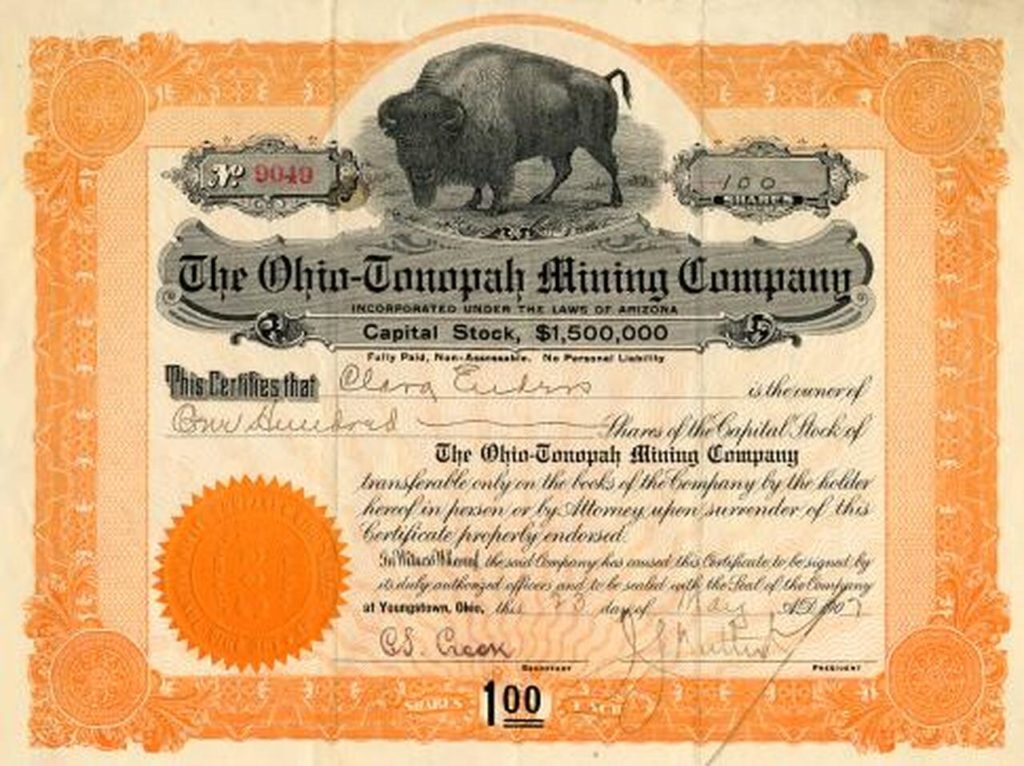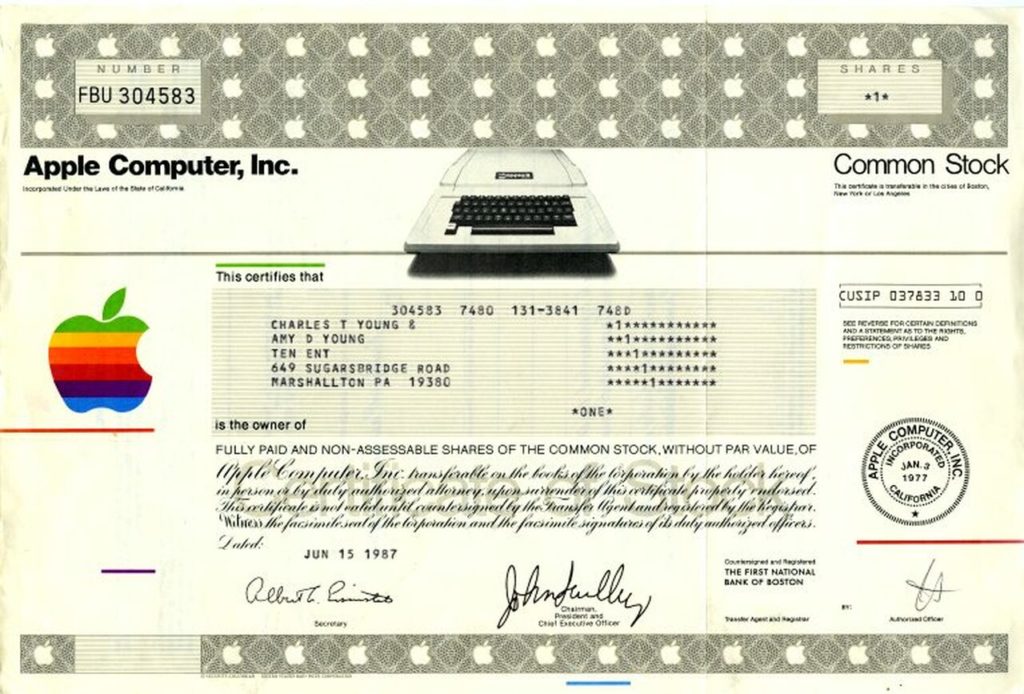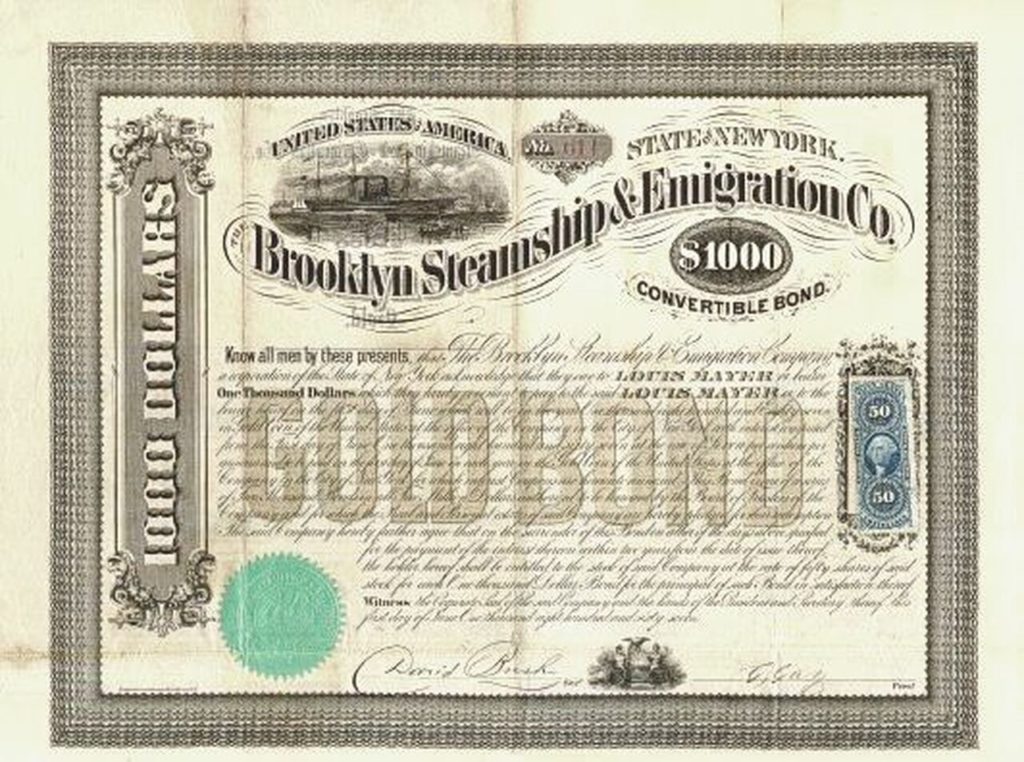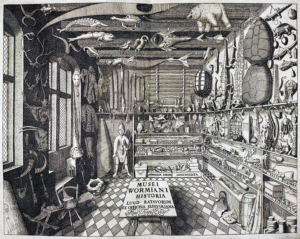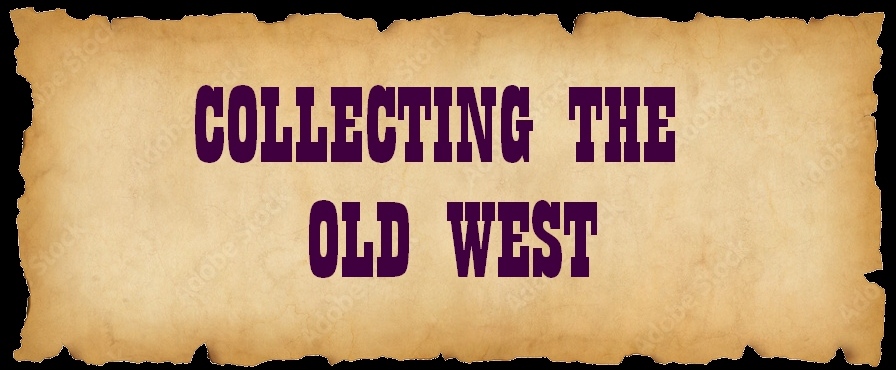
From time to time I check out Scripophily.com, a major dealer in collectible stock certificates—not just for those but for other assorted ephemera as well: letters, autographs, etc. Here’s a current selection (by no means complete!) related to the Old West.
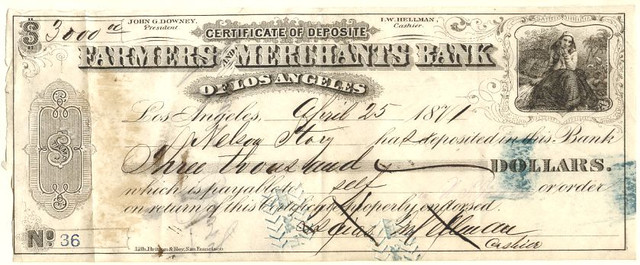
Farmers and Merchants Bank of Los Angeles check signed by Isaias W. Hellman and Nelson Story in 1871. The oldest bank in Southern California, the Farmers and Merchants Bank was founded in 1871 by John D. Downey and Isaias W. Hellman, a successful German Jewish merchant and real estate speculator. Nelson Story had a colorful career that included freighting between Missouri and the Rocky Mountains, driving cattle and a wagon train from Texas to Montana through hostile Indian territory, as well as mining, milling, ranching, and banking. He is a major figure in the history of Bozeman, Montana. $295. https://scripophily.net/farmers-and-merchants-bank-of-los-angeles-1871-signed-by-isaias-w-hellman-and-nelson-story/

Pawnee Bill signed check for Buffalo Bill’s Wild West and Pawnee Bill’s Great Far East Show, dated 1912. Pawnee Bill (Gordon William Lillie, 1860-1942) was a trapper, cowboy, and waiter before finding employment as a teacher at the Pawnee Agency in Indian Territory (now Oklahoma). In 1883 he was hired as a Pawnee interpreter in Buffalo Bill’s Wild West Show. He later started his own show, Pawnee Bill’s Historical Wild West, Indian Museum and Encampment. Pawnee Bill and Buffalo Bill Cody merged their shows in 1908. I’ve seen a number of Pawnee Bill checks, and this is an early one. $395.00. https://scripophily.net/buffalo-bills-wild-west-and-pawnee-bills-great-far-east-show-check-signed-by-pawnee-bill-annie-get-your-gun-musical-is-based-on-this-company-1912

Total Wreck Mining and Milling Co. Stock Certificate, Arizona Territory, 1882. What a great name! This certificate is signed by the company president, J. M. Requa, and secretary, John McMillan. Issued to Nathan R. Vail. Mint condition. The mine was established in southwest Arizona in 1879 and incorporated in New York. It was the top silver producer in it’s time. $795. https://scripophily.net/total-wreck-mining-and-milling-co-stock-certificate-arizona-territory-1882/
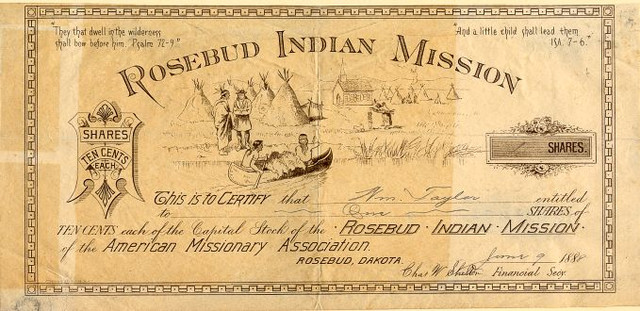
Rosebud Indian Mission stock certificate, Dakota Territory, 1888. Signed by the mission’s financial secretary, Charles W. Shelton. Biblical references in upper left and upper right corners. Uneven toning otherwise very fine. According to the September 1885 issue of The American Missionary, shares—i.e., donations—were sold at a dime apiece as a way to raise the $8,000 needed to build the mission, which would serve 8,000 Native kids. If a religious school could get its students to buy 300 shares, they’d receive a large certificate, suitable for framing, to put up on their wall—and they could nominate a life member of the American Missionary Association for every additional 300 shares they bought. This share was issued to a William Taylor. $495. https://scripophily.net/rosebud-indian-mission-dakota-1888/
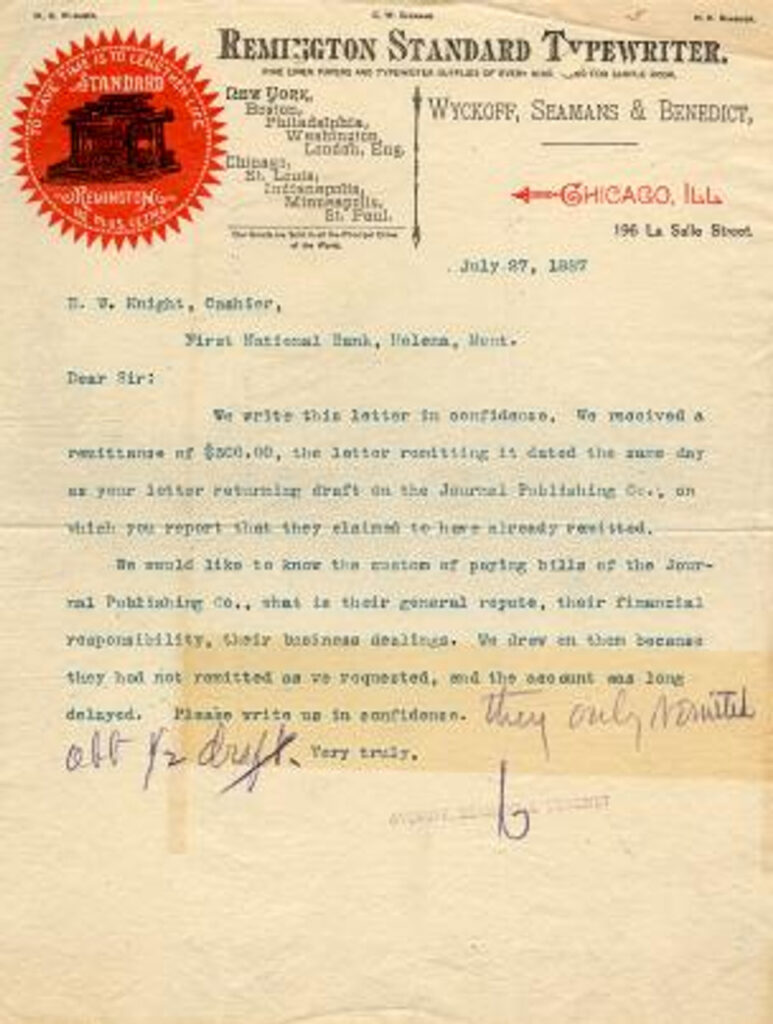
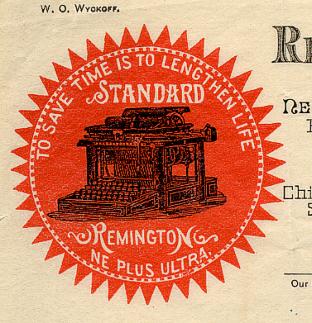
Remington typewriter vignette.
Remington Standard Typewriter letter from the Chicago office to the cashier of the First National Bank of Helena, Montana, 1887. The Remington firearms company started producing typewriters in 1873. This letter will be of interest to typewriter collectors (like actor Tom Hanks, who has more than 300 of them), letterhead collectors, as well as Montana buffs. Great vignette of an old-timey typewriter—presumably state-of-the-art in the late 1880s. $139.95. https://scripophily.net/remington-standard-typewriter-montana-1887/
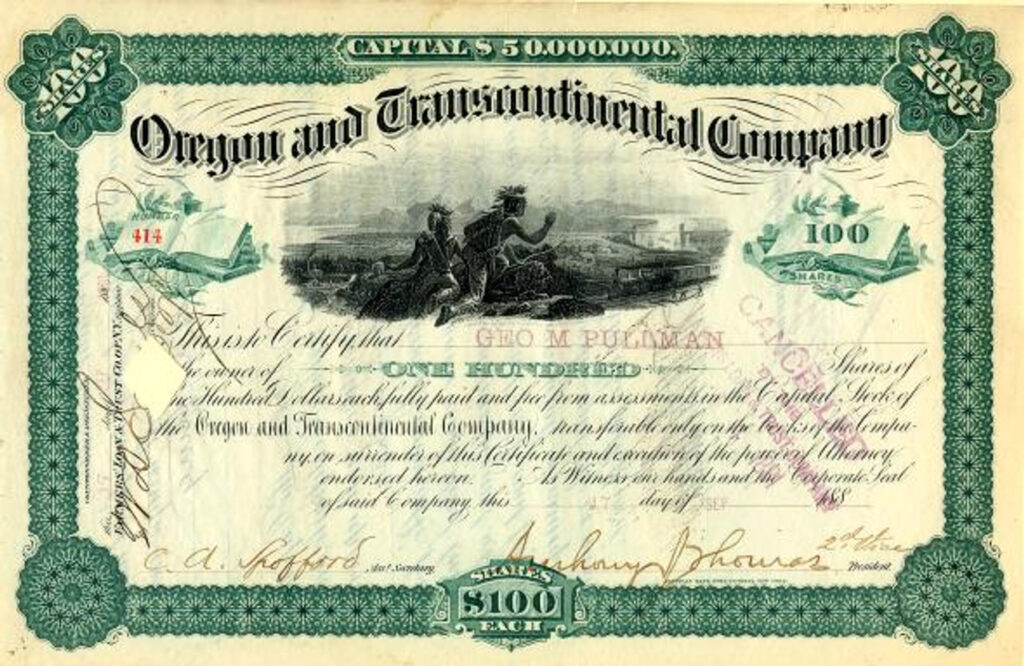
Oregon and Transcontinental Company signed by George Pullman of the Pullman Palace Car Company, 1881. Printed by the American Banknote Company, with a vignette of Indians overlooking the unchanging and changing landscape: “oceans, rivers, mountains, farms, towns, miners and trains.”
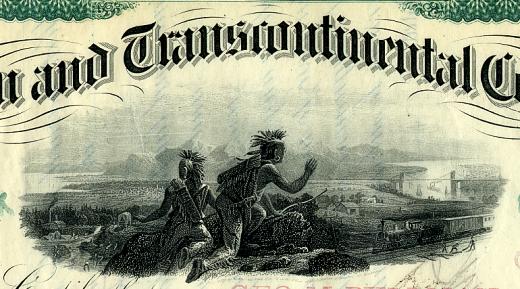
Oregon and Transcontinental Company vignette.
(No doubt intended to illustrate progress but a sad representation of the vanishing frontier.) Issued to George Pullman and signed by him on the verso. $295. https://scripophily.net/oregon-and-transcontinental-company-signed-by-george-pullman-pullman-palace-car-company-1881/
All images courtesy of Scripophily.com.
Find something you want by reading NorthwestCollector.com? Please tell the seller about us!

